How to keep a clean home when you have pets – our ultimate guide to living with furry friends
Professional cleaners share their top tips
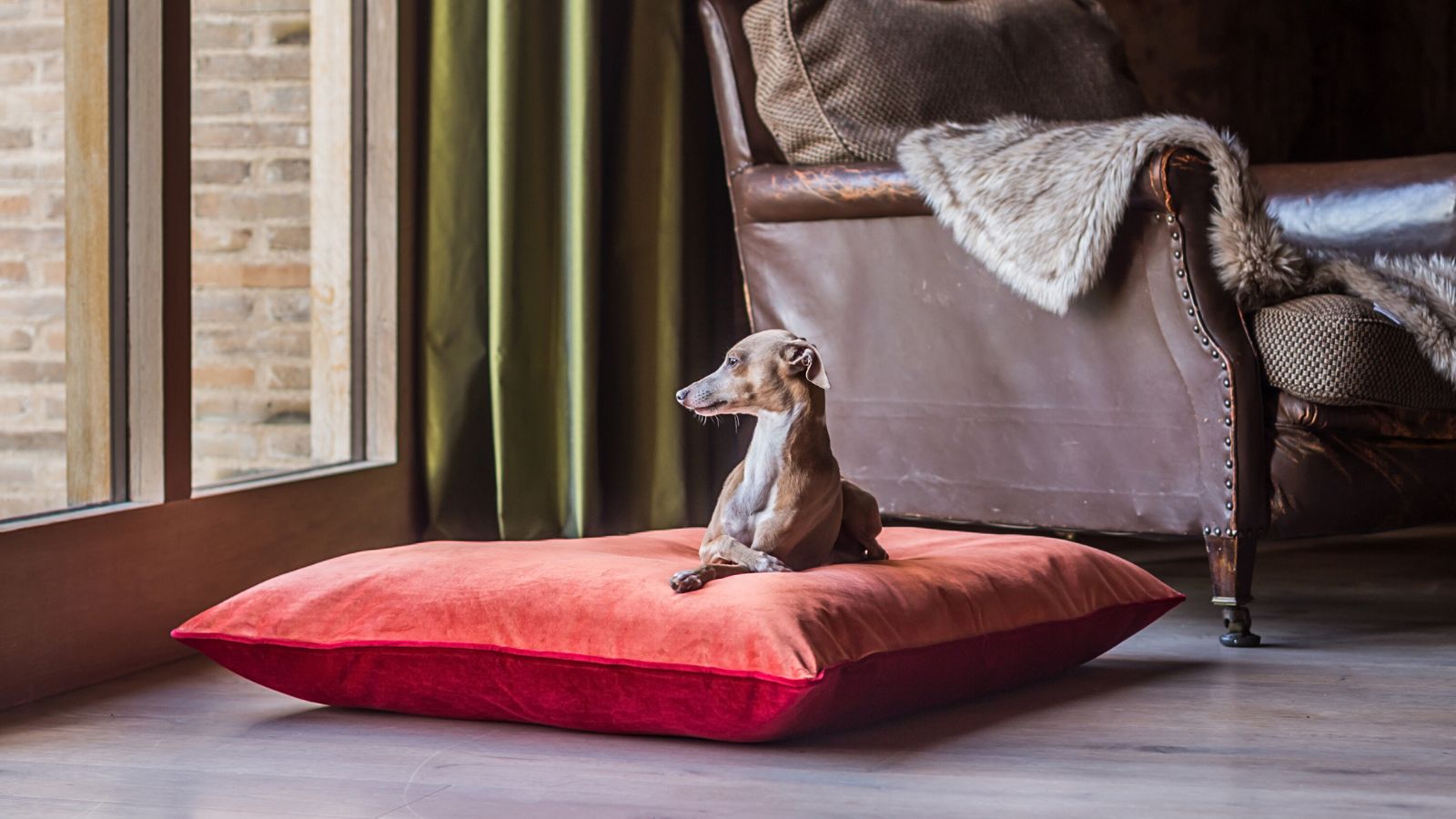
- Cleaning routines
- Manage pet hair
- Surface by surface vacuuming and cleaning
- Cleaning products every pet owner needs
- What to shop
- Do animals prefer clean houses?
- Are essential oils safe for pets?
- How can I reduce litter tracking around the house?
- Can pet hair ruin a washing machine?
- What breaks down dog hair in a washing machine?
- Meet our experts

Chiana Dickson
No matter how much we love our furry friends, learning how to keep a clean home when you have pets can be a real feat. With four dogs, three guinea pigs, two fish tanks, and a tortoise, I know that feeling all too well.
As I've learned, while it is their house too, sometimes a few extra precautions and rules are needed to keep a pet-friendly space sanitized and smelling fresh – whether that means investing in a specific vacuum cleaner or sticking to a regimented cleaning routine. In short, staying on top of pet messes and odors is a must.
In this guide, we share all the expert tips you need, including having the best pet vacuum.
Ace your cleaning routines

Routines are the key to a clean home
As I've learned, lesson number one of living with pets is that there will always be some degree of compromise. After all, if you've chosen to have one, you should be aware that scratched furniture, loose fur, and the occasional unwanted mess are all part and parcel of the commitment.
That being said, having a pet does not mean waving goodbye to keeping a hygienic house. Top cleaning tips and achievable cleaning routines are the key to a sanitized space.
Mohammed Hashi, cleaning expert and founder of Ivy Cleans, advises, 'As a baseline, you should consider a routine that includes daily tasks like sweeping or vacuuming pet hair, wiping down surfaces, and cleaning food and water bowls,’ paired with a stricter and more thorough weekly deep clean – especially of pet areas, like washing dog beds.
I find it easiest to just wash our stainless steel and ceramic dog food and water bowls with an all-natural dish soap, such as the bestselling Seventh Generation Dish Soap Liquid available at Walmart, although you can alternatively usually pop them in the dishwasher instead. I also like using the Mrs. Meyer’s Clean Day Multi-Surface Everyday Cleaner, also available at Walmart for daily cleaning.
Design expertise in your inbox – from inspiring decorating ideas and beautiful celebrity homes to practical gardening advice and shopping round-ups.
You should also never leave pet food to sit in bowls for more than 24 hours – you don't want to attract unwanted indoor pests. The same applies to any cat litter boxes you might have around the house, which should be kept in a well-ventilated area, scooped daily, and changed fully at least once a week.
Following the golden rules for stain removal is also crucial if you have pets, and whether you are getting stains out of a mattress topper, cleaning a carpet, or cleaning upholstery, as these stains need to be treated immediately to prevent them from setting in for good, says Melissa Landspurg, JW Marriot Charlotte assistant director of services and housekeeping expert.
‘When you have pets, sometimes stains happen,' she admits. 'Prevention is important, but when accidents do occur, it's important to know how to clean them up. 'As a professional housekeeper, I prefer to use an enzyme spotter, followed by an odor eliminator for pet stains. The odor eliminator is especially important.'
We recommend the Simple Solution Extreme Pet Stain and Odor Eliminator Spray available at Amazon for this, which is ideal for getting rid of dog odor in your house.

Removing stains swiftly is essential
Finally, when it comes to your pet-friendly cleaning routine, it's not just your home that needs cleaning. Regularly grooming and bathing your pets is another great way to keep your home cleaner overall.
Nicole Ellis, certified dog trainer and pet lifestyle expert with Rover, shares, ‘Good grooming is the first step to limiting shedding. Look into using a good steel comb and a high-quality slicker brush. I also really like the StripHair gentle groomer, available at Amazon.
‘Set some time aside at night to brush your pet out, removing any loose fur that will otherwise stick to the couch. You want a brush that removes the loose hair, not pulling the attached hair out. A high-power blow dryer is also great for blowing out loose hair.’
This can be made even easier with a vacuum grooming kit, like the Dyson Pet Grooming Kit that's compatible with most cordless Dysons.
Marla Mock, president of Molly Maid, also advises, 'Set up a shallow container of warm water and a towel by the door. When you return, dip each paw in the water, gently swish, and dry with the towel.
'For quick clean-ups, pet wipes are a great option to have on hand [such as the Earth Rated Unscented Dog Grooming Wipes available at Walmart] and are perfect for muddy faces and paws.'
Pet hair management

While not all pets are furry, if you do have dogs or cats, it's crucial to keep up with pet hair management
If you share your home with pets, it certainly pays to invest in one of the best vacuum cleaners, and more specifically, the best vacuum for pet hair.
To get the most from your vacuum cleaner, look for those with powerful suction, HEPA filters for combatting allergies and pet dander, and attachments for furniture and tight spots.
In my own home, I use and love the Miele Blizzard CX1 Cat & Dog Bagless Canister Vacuum available at Amazon, which certainly isn't cheap but is very effective, and I reach for the BISSELL Pet Hair Eraser Cordless Hand Vacuum, also available at Amazon, whenever I need to give the sofa a quick once-over.
Consider vacuums with pet-specific attachments like upholstery brushes and crevice tools for thorough cleaning. The best cordless vacuums can also provide added convenience for quick, frequent clean-ups around the house.
I personally vacuum my home several times weekly to keep it free of hair, but how often you should vacuum will depend on how many pets you have and what species or breed they are, as some shed more than others.
For example, some dogs, such as German Shepherds and Golden Retrievers, may require more cleanup efforts than others. On the other hand, hypoallergenic pets – such as a Miniature Schnauzer or Bichon Frisé – require less vacuuming, as they do not shed hair like other pets.
Most breeds of cats shed more at certain times of the year, but groom themselves and drop fur continuously.
As Josh Miller, professional cleaner and CEO of Clean Carpets, advises, for modern shedders or single-pet households, 'High-traffic areas and places where your pet is constantly in may require being vacuumed daily, or at least two to three times a week to tackle all the many loose hairs.
'Homes with two or more pets, or those with heavy shedders, may need to do it every day just to maintain cleanliness in their living space.'
Having one of the best robot vacuums, such as the eufy S1 Omni Pro we reviewed, can really help keep on top of floor cleaning with pets and reduce canister vacuum use.
In contrast, if you have pets that shed minimally, a weekly vacuum may suffice. However, it's not a good idea to vacuum less often than this. Pets or no pets, weekly vacuuming is recommended by experts to maintain baseline cleanliness in your home.
Additionally, unsurprisingly, the more animals you have indoors, the more often you should be cleaning and vacuuming your home, and frequency will also be affected if anyone in your household suffers from pet-related allergies.
Why is pet hair so hard to vacuum?
Just like dust and dirt, pet hair clings to carpet fibers but unlike other household messes, pet hair also generates static, and the long, thin strands are able to wrap around carpet fibers. Natural oils in the animals' fur helps it to stick even further, making it harder to remove, even if you have one of the best vacuums for carpet.
'Different breeds of cats and dogs have different hair types,' explains Luke Stitson, floorcare engineer at Dyson. 'If we look at dogs alone, you see French Bulldogs with smooth coats that consist of short, stiff fibers.
'Poodles and Doodle cross-breeds have textured coats with tight curls and waves. Even for longer-haired breeds, there can be variation in texture, with Golden Retrievers having a stiffer drop coat and Cocker Spaniels having a silky soft coat.'
This is why floorcare brands have struggled to design the perfect pet hair vacuum.
'Each of these different hair types provides a different challenge for a vacuum cleaner,' Luke continues. 'The longer fibers are less likely to get trapped in the floor, however once agitated by a cleaner head brushbar are more likely to wrap. Shorter fiber types do not tangle easily, but are more likely to get trapped in carpets and rugs and be harder to agitate in the first place.'
'In addition, different breeds can shed pet hair at different rates. Some do not shed at all, whilst others shed seasonally or constantly. This means different breeds will introduce different amounts of fibers into the home at different rates across the course of a year,' he elaborates.
But it's not just the hair structure that creates the challenge of keeping a home clean when you have pets. 'When pets groom themselves, they deposit minute allergy-causing protein particles on their hair and skin,' Luke explains, highlighting one of the most common household allergens that trigger symptoms.
Allergens becoming airborne are a major reason to consider one of the best air purifiers to improve your home’s air quality. I use one myself as an allergy sufferer and I can't remember the last time my symptoms were triggered at home despite having four dogs in the house.
Picking one with a HEPA filter gives you the best shot at a cleaner indoor space and improved air quality, which is why regularly running once while cleaning is an oft-recommended cleaning tip for those who suffer from pet dander allergies.
For the best results, place the air purifier in the room(s) where your pet spends the most time, and don’t forget to replace the filters regularly.
Surface by surface vacuuming and cleaning

Techniques will differ depending on the surface you're cleaning
Whichever surface you're tackling, Josh Miller from Clean Carpets, recommends getting into the habit of regularly moving furniture and appliances, to ensure you're vacuuming everywhere.
This will make a huge difference to the appearance of your home, and is particularly beneficial for any allergy sufferers. Don't forget about corners, baseboards, and stairs, too.
'Pet hair and dander can quickly accumulate behind washers, dryers, and refrigerators, [and] especially under couches, beds, and chairs,' he shares.
Hardwood floors
For cleaning hardwood floor when you have pets in the house, Carolina Kazimierski, president and co-owner of Sophia's Cleaning Service, suggests, 'What I recommend here is sweeping or vacuuming like usual, then mopping floors the right way to loosen hair,' she says.
A microfiber mop works best, such as the EasyWring™ Spin Mop & Bucket System available at Walmart.
'Otherwise, though, I would say 'wet' cleaning methods like mopping are something I would advise avoiding when it comes to cleaning up pet hair from wooden floors,' she continues. 'If you're cleaning dry hair with a wet mop, you're likely to just end up with a mess, and a good dry mop can help by itself to quickly pick up lots of pet hair.'
Therefore, the Swiffer Sweep & Mop Dry + Wet Floor Mopping and Sweeping Kit available at Walmart is a great all-around option.
Carpet
It's notoriously more difficult to vacuum pet hair from carpets than from hard floors. 'Carpets are fibrous, so pet fur tends to stick around once it gets in contact with the fabric, as opposed to getting swept away by wind or foot traffic,' explains Keith Wroblewski, master technician at Colorado Carpet Masters.
To help remove pet hair more quickly, Keith recommends vacuuming in alternating directions. 'When vacuuming your carpet, you want to be able to clean "against the grain" as much as possible,' he says. 'This prevents fur from just "going along" with the fabric fuzz and not budging as a result.'
Punteha van Terheyden, Head of Solved, has two cats and uses a handheld carpet rake, available from Amazon, twice a month to pull up embedded fur from her carpets. She says, 'I am yet to find anything that's as effective in getting it all up, but it's hard on the wrists and the back. Do it in bursts and have your vacuum handy to suck up the piles of fur you pull.'
The best steam cleaners will also give your carpets a next-level clean, removing hair, lint, and dust. As Chi Ip, owner of Tidy Here Cleaning Service Boston, says, steam cleaning is 'an effective and thorough way of removing dog hair as it penetrates deep into the fibers and removes the toughest hairs. It also leaves your carpet looking clean and new.'
Our top pick is the Hoover PowerScrub Deluxe Carpet Cleaner Machine for Carpet and Upholstery, available at Amazon.
Upholstery
The easiest way I've found to keep my upholstery looking clean and fur-free is by vacuuming furniture without damaging upholstery, but you can also use a lint roller for this.
As Forrest Webber, owner of Bear Brothers Cleaning, the number one cleaning company in Huntsville, Alabama, says, 'Using lint rollers will work well on fabric sofas, chairs, and cushions, because the sticky sheets efficiently grab loose pet hair. The Scotch-Brite Lint Roller available at Walmart is a strong option with perforated sheets for easy tearing.'
In a pinch, you can also use sticky tape if you don't have a lint roller at home. All you need to do is roll the tape around your hand so the sticky side is facing outward and rub your hand over the fabric furniture or clothing to collect the hair.
'If you're conscious of being sustainable at home, however, opting for a reusable brush such as the self-cleaning OXO Good Grips FurLifter from Walmart is a great option, as traditional lint rollers need frequent replacing, and cause a large amount of non-recyclable waste, just like sticky tape.
Laundry
As someone with four dogs at home, I love tips on how to remove pet hair from fabric, laundry, and clothes. Now, during peak shedding season, it's needed more than ever. So, how do you remove pet hair from fabric and get it out of laundry?
- Use a lint roller: Just like removing hair from upholstery, a lint roller can be used to lift loose hairs from your laundry with ease. Just give garments a quick once-over before popping them in the machine, or wait for garments to dry after washing, and use a lint roller to remove any residual hairs. Punteha uses the Mr.SIGA lint rollers, from Walmart, which she buys in a multipack.
- Use vinegar: Many of us may have heard of using white vinegar in laundry to help deodorize clothes. There are several benefits this pantry staple offers to remove pet hair from laundry, according to Joshua and Ashlie Waterman, co-founders of Stripped Down Laundry. In fact, they explain, adding just ½ a cup of distilled white vinegar to a large load of laundry can help to relax the clothing fibers and reduce the laundry's pH, resulting in less static cling and helping to reduce the amount of fur that clings to you. ‘Static cling is usually caused by alkaline laundry detergents, and the clothes rubbing against one another as the machine cycles,’ they say. ‘Reducing this with vinegar will stop the hair from gluing itself to your garments, so to speak, allowing it to be washed into your lint trap for easy removal.’
- Keep your machine clean: When it comes to removing pet hair from laundry and clothes, it's also crucial to keep your washing machine clean, as all removal methods will be redundant if the inside of your washing machine and tumble dryer are coated in tricky pet hair, says Stuart Pyburn, franchise consultant, and appliance expert at Mr. Appliance, a Neighborly company. ‘It really pays to clean a washing machine once in a while, especially when you have pets, as the hair will stick around inside the drum for several washes, adding hair to clothes that may have previously been relatively hair-free,’ he advises.
- Use rubber gloves: Finally, as Forrest suggests, you can also use rubber gloves to remove pet hair from fabric, laundry, and clothing. 'Slightly wet a rubber glove and rub it over the fabric,' he says. 'Static and friction will lift pet hair into clumps for easy removal. 'Any textured dishwashing glove works, but the Mr. Clean Bliss Latex Free Gloves available at Walmart have a good grip and durability.' Then, simply vacuum up any clumped fur and dander.
Cleaning products every pet owner needs

The right cleaning products are essential for a clean home
As a pet owner, keeping a clean home can feel like a never-ending task, especially with fur, muddy paws, and unexpected messes. That’s why having the right essential cleaning tools and cleaning supplies on hand is so important. Here's what we recommend keeping onhand:
- An enzyme cleaner: At home with two 'rambunctious' Labradors, Bryan Griffin, founder at Patriot Maids Cleaning Services, describes an enzyme cleaner as a 'lifesaver,' and it's something I rely on, too, for cleaning up any little accidents. He explains, 'It doesn't just cover up the mess it dives deep to break down the stuff causing the stink and stains, leaving your space truly clean and fresh. The Rocco & Roxie Supply Co. Stain & Odor Eliminator for Strong Odor available at Amazon is a winner in my book.'
- A lint roller: As we've already touched on, a lint roller really is an essential for any pet owners. Bryan advises, 'If you've got pets, you've got pet hair. Everywhere. Lint rollers are my quick fix to get a home guest ready in under an hour before guests arrive, or when I'm heading out.'
- A handheld vacuum: Another absolute essential in my household to get dog hair out of the carpets is a handheld vacuum. We use the Shark® WANDVAC™ Cordless Handheld Vacuum, available at Shark, but there are also several more affordable models available, such as the BLACK+DECKER dustbuster AdvancedClean Cordless Handheld Vacuum available at Amazon, which cleaning expert Bryan recommends.
- A non-toxic household cleaner: Keeping a clean home when you have pets is undoubtedly difficult, but Kasey Norton from Hyve Clean, owner of Dodger, a three-year-old English Cream Golden Retriever, stresses the importance of eco-friendly cleaning when you have four-legged friends around. She says, 'As a pet owner myself, one of the most important things we have in our home is a truly non-toxic household cleaner. I also have children who play on the floor, but nowhere near as much as Dodger. And I'm pretty sure I don't want any of them playing a floor cleaned with toxic chemicals.' Therefore, Kasey recommends the Hyve Overtime Multi-Surface Cleaner available at Hyve, which is a non-toxic, probiotic-powered household cleaner.
- A pet rake: Pet rakes, such as the highly rated Uproot Cleaner Pro Pet Hair Removal Tool available at Amazon, can be used to clean the couch, stairs, or pet towers. Unlike lint rollers, it's reusable and needs a little cleaning. You can also, of course, use a specifically designed carpet rake, such as the MR.SIGA Pet Hair Removal Rubber Broom available at Walmart.
When in doubt, look for cleaners labeled as pet-safe. These are free from harsh chemicals like ammonia, bleach, and phenols. Vinegar and water are great natural cleaners for many surfaces, but to be doubly safe, move your pet out of the room when spraying products and wipe the surfaces down with clean water after you have sanitized them.
If you do have a few chemical cleaners remaining in your home, such as for cleaning a bathroom, be sure to organize your cleaning supplies so they are away from one another to avoid confusion or cross-contamination.
What to shop
All prices were correct at the time of publication.
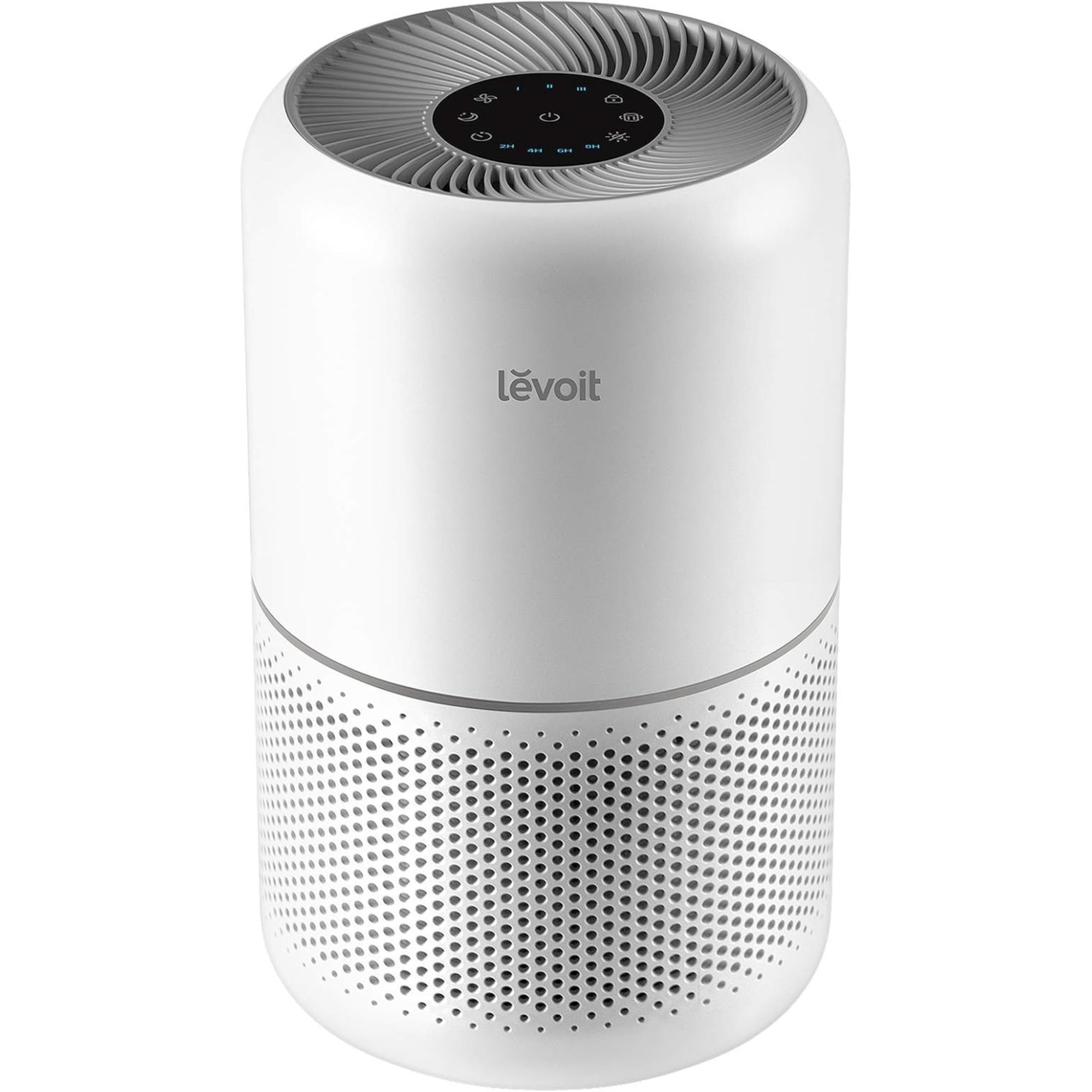
Sleek and smart, the Levoit air purifier can help with pet air, dust, odors and pollen, making the air in your space feel more fresh and clean. Whether you use in the day, or use the quiet sleep mode at night, the design can fit seamlessly into the home.
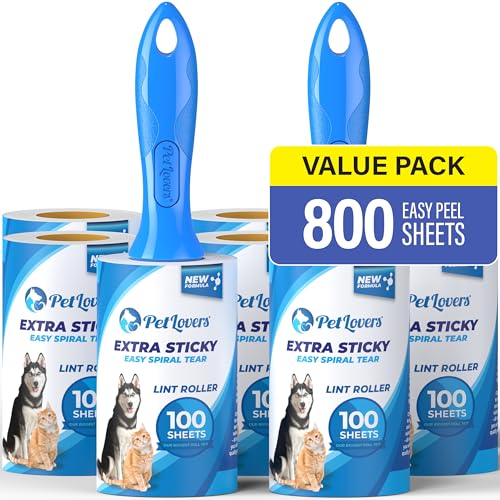
This pack of lint rollers contains 800 sheets, which will keep your upholstery fur-free for quite some time.
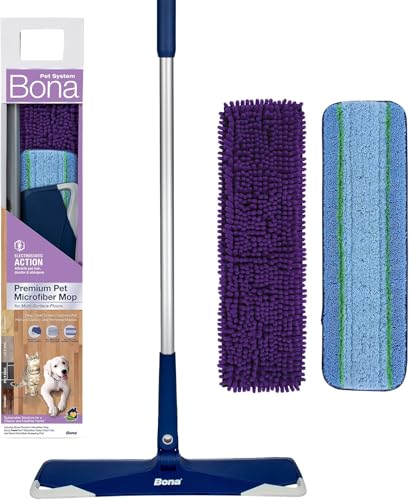
This set includes a microfiber sweeping mop and a microfiber deep cleaning pad, covering you for both wet and dry pet hair cleaning. The pads are also washable, and the mop has rubber corners to protect your walls and furniture from scratches.
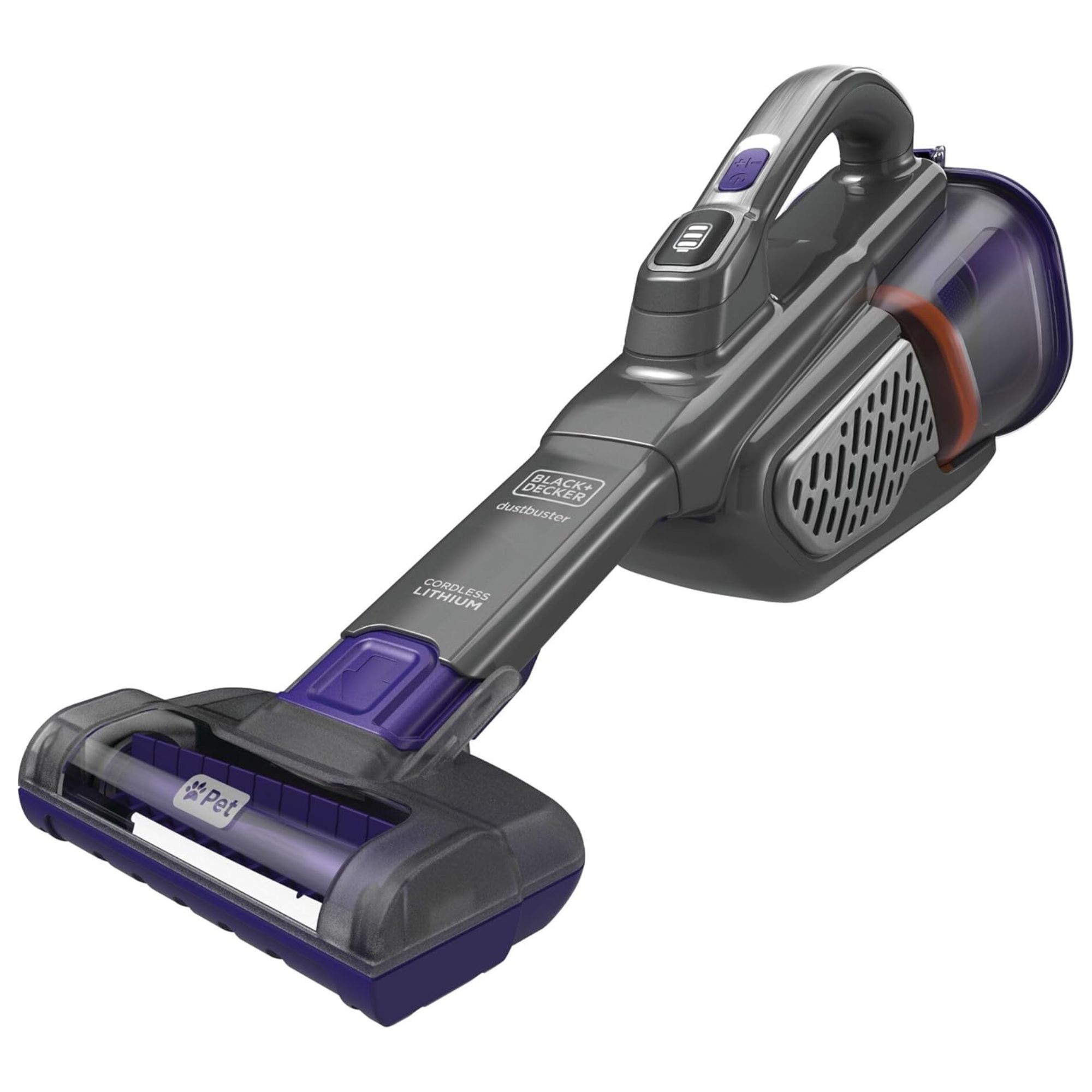
Keeping a handheld vacuum nearby is a key part of vacuuming pet hair the right way, so you can clean hair as and when you see it. This handheld vacuum from Black+Decker is the best we've tested, with flawless cleaning on hard floors and a motorized attachment for upholstery.
Read more in our full Black+Decker dustbuster furbuster AdvanceClean+ review.
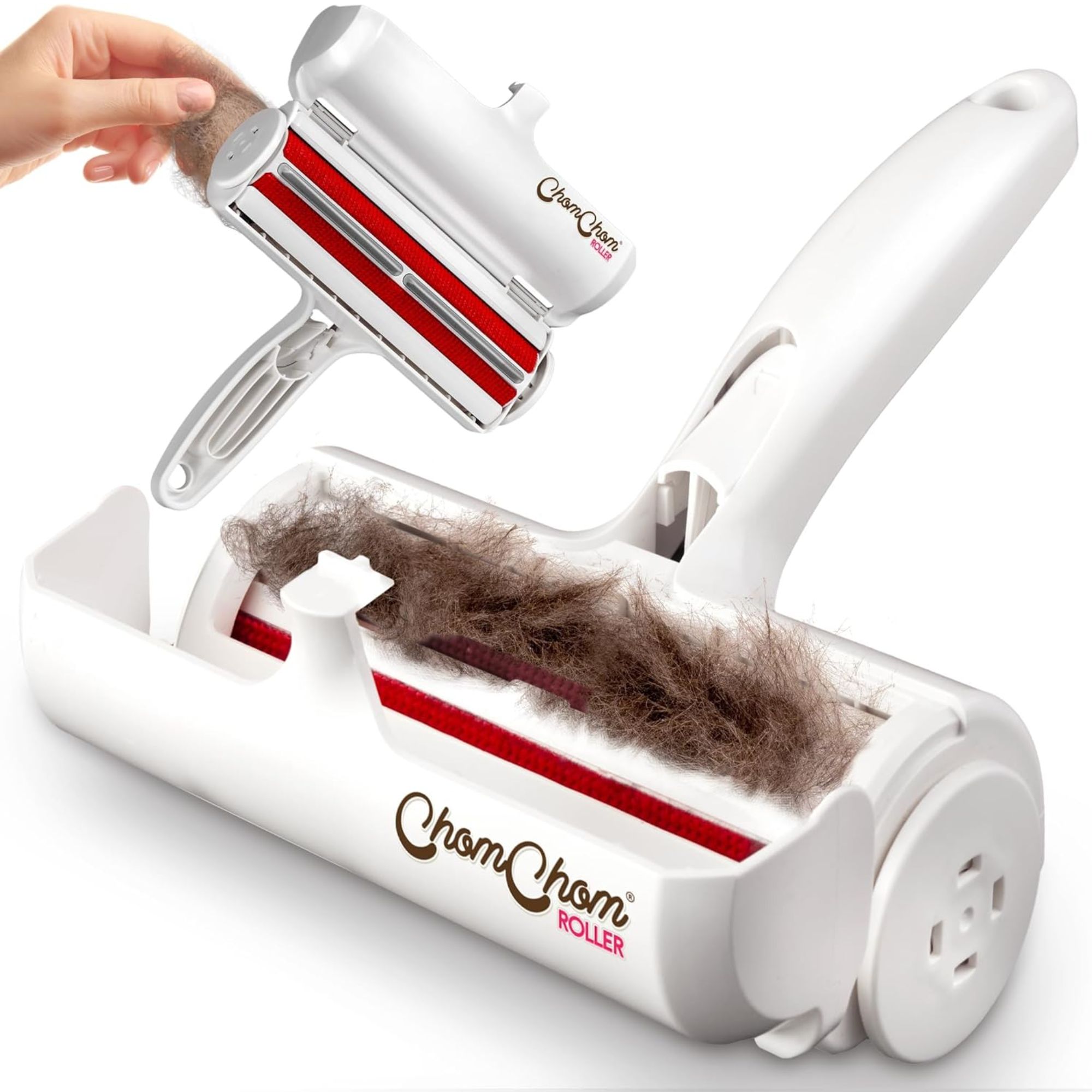
This roller with reusable lint and fur catcher can ensure anything surfaces, from couches, pillows, rugs, and bedding, remains fur-free.
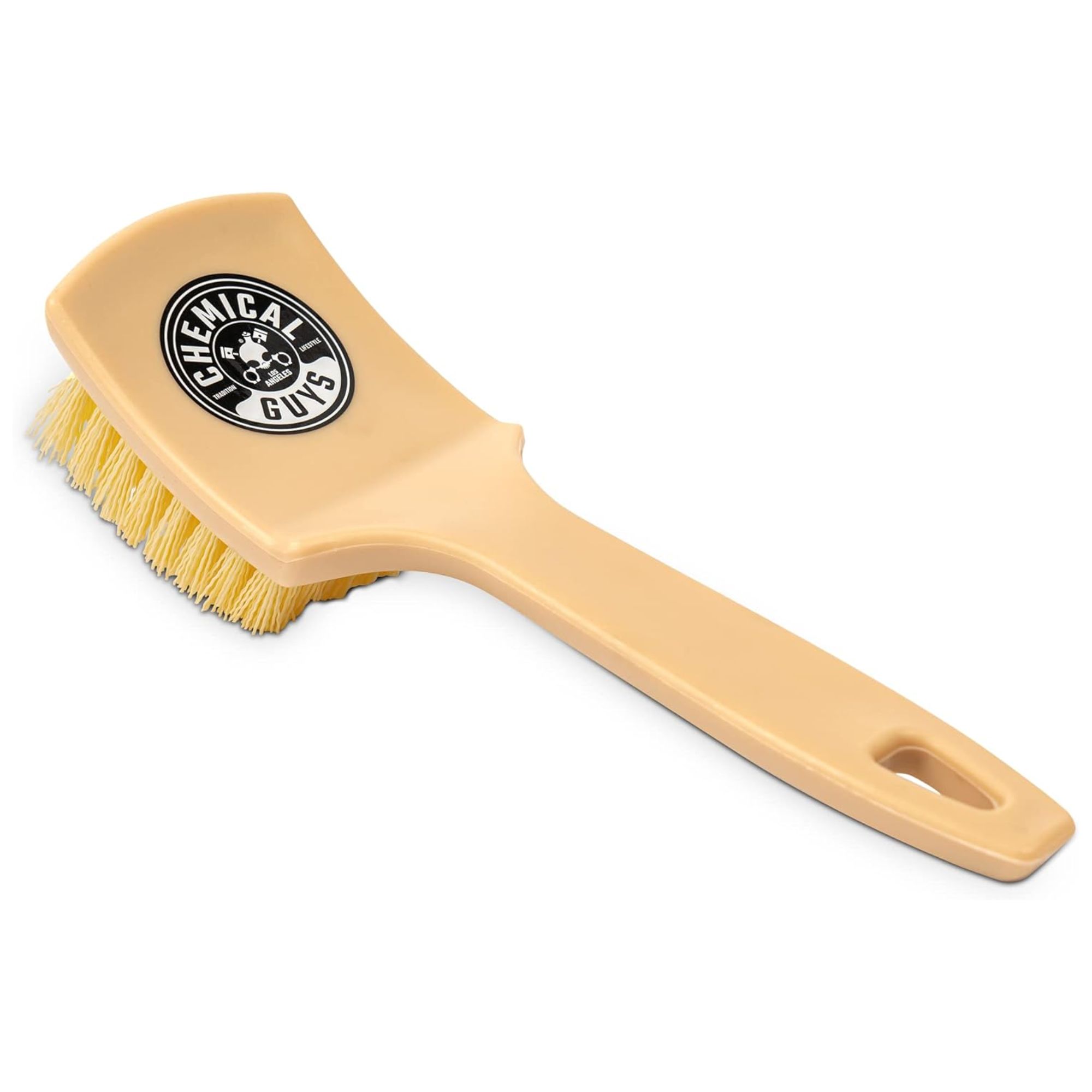
Ideal for deep cleaning all carpets, including those in your car, this brush features an ergonomic handle for easy scrubbing and durable, long-lasting bristles.
FAQs
Do animals prefer clean houses?
It shouldn't come as a surprise that our pets prefer to live in cleaner homes. While your pet might not have a full understanding of what ‘clean’ really means, no one would like to live in a home that has constant strong odors, pests and parasites, and clutter that makes it difficult to get around. Cleaning a house when you have pets isn't just for your own sake, but theirs too.
It's also better for their health, for example, fussy cats who are notoriously picky eaters and only typically drink water that they do not fear is contaminated. Cleaning and refreshing their water bowls daily is a must to preserve their kidney function and keep them hydrated.
Are essential oils safe for pets?
It may surprise you to learn that some essential oils are harmful to cats. Oils such as cinnamon, pine, eucalyptus, clove, lavender, citrus, peppermint, and even cleaning with tea tree can all harm your furry friend. If you suspect your pet has accidentally ingested any of these oils, or gotten them on their fur, clean the affected area and contact your vet immediately.
Be cautious about using them in electric oil diffusers as well as they may inhale microscopic droplets of the oils.
How can I reduce litter tracking around the house?
Using a mat under the litter box can help catch stray litter. You can also try using a litter with larger granules or a low-tracking formula, such as World's Best Cat Litter from Walmart.
Can pet hair ruin a washing machine?
Pet hair can clump up when exposed to water and clog up the pipes, drum, and filters in your washing machine, leading to premature signs it's time to replace old appliances.
As a result, it is best to try to remove as much pet hair as possible before washing your clothing and home linens to help keep your washing machine working properly and prevent fire hazards.
This is especially important if you have a combination washer and dryer. Clean your dryer vents regularly of collected dust and fur.
What breaks down dog hair in a washing machine?
Besides white vinegar, there are some commercial pet hair dissolvers that can be used to physically break down hair in a washing machine when running a cleaning cycle.
This hair will then be caught by the lint trap more easily, or washed away into the drains. The Uproot Clean Washing Machine Cleaner Tablets available at Amazon are a good example of this.
Meet our experts

Since launching in 2017, Patriot Maids, founded by Bryan, have served over 2,000 homes annually across 12 major cities.

Carolina Kazimierski is the co-owner and president of Sophia's Cleaning Service, which was founded in 1984 and is one of Chicago's longest-standing and best reviewed cleaning companies.

Bear Brothers Cleaning has been featured on Martha Stewart, The Spruce, Real Simple, Architectural Digest, and more.

Luke is a lead research engineer in the Floorcare Research Team, who began his Dyson career using his multi-disciplinary skillset to develop new cleaner head technology for the next generation of Dyson cordless vacuums. In his time at Dyson, he has built a strong foundation in experimental work, the design, build, and testing of cleaner heads, primary separation systems, and test rigs.

Marla joined Neighbourly in 2012 as franchise consultant and was quickly named vice president of operations for Rainbow Restoration and then vice president of operations for Aire Serv Heating and Air Conditioning before transitioning to Molly Maid where she was named president in 2023. She is responsible for the overall leadership and growth of Molly Maid throughout the US.

Muffetta Krueger is a cleaning expert and founder of Muffetta’s Domestic Assistants with over 16 years of operational management experience in the service industry.
When you have pets at home, sometimes it is smart to think not just about how you clean your home, but the furniture you bring into it, adds Mohammed Hashi, cleaning expert. ‘Stain-resistant, easy-to-clean fabrics and flooring options like hardwood or tile can make cleaning up after pets much easier,' he says.
For example, cleaning wood furniture will be far easier than upholstered furniture, and the same applies to hardwood or tile flooring as opposed to carpet.

Ottilie joined Homes & Gardens last year, after finishing a Master's in Magazine Journalism at City, University of London. With previous contributions in Livingetc and Motorsport Magazine, she produces content for the Solved section on the website, focusing on clever tips and tricks to keep your home beautiful, organized, and clean, with particular expertise on all things home fragrance. She also has a Master's degree in English Literature and History of Art from the University of Edinburgh, where she developed a love for inspiring interiors and architecture.
- Chiana DicksonContent Editor